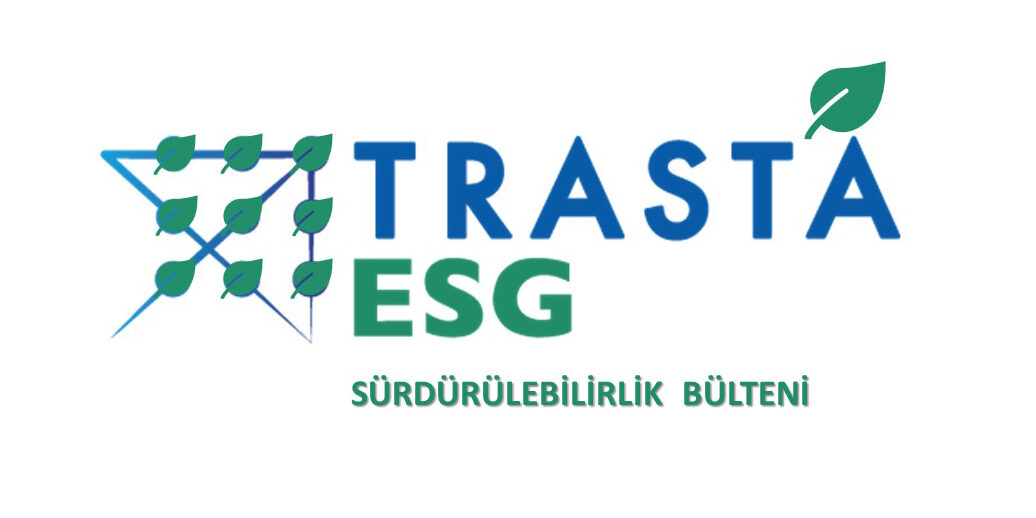MESSAGES FROM US
Dear readers,
Managing sustainability and climate-related risks requires effectively quantifying and prioritizing these risks. In this issue, we aim to provide some clarity on the topic and take a closer look at the NGFS’s short-term scenarios. While highlighting key developments from the highly dynamic ESG agenda, we also cover the ISSB’s recent simplifications regarding Scope 3 emissions reporting.
Wishing to grow sustainability awareness together.
Stay sustainable…
ÖZGÜN ÇINAR, CEO

ESG NEWS
- Researchers from Dartmouth College have estimated that the biggest corporations in the world have caused a total of $28 trillion in climate damage. The results of the study are meant to help with efforts to hold the companies financially accountable, reported The Associated Press. DETAIL

- A new study published in the Lancet has revealed that the increase in temperature and carbon dioxide in the atmosphere due to the climate crisis has also caused the amount of arsenic in rice, the world’s most consumed grain, to increase. The authors of the study said that when the temperature and carbon dioxide levels increase simultaneously, the amount of inorganic arsenic in the soil also increases, and that arsenic easily passes into rice, which grows in wetlands and has an absorbent structure. DETAIL
- According to the results of a survey of business leaders conducted by the non-governmental organizations Beyond Fossil Fuels, E3G and the We Mean Business Coalition, 97% of medium and large company executives are considering abandoning fossil fuels. DETAIL
- The International Sustainability Standards Board (ISSB) has proposed significant changes to the standard for disclosures for climate (IFRS S2). The proposals provide new conveniences primarily for companies in the financial sector. These changes aim to ease the reporting burden around Scope 3 greenhouse gas (GHG) emissions without reducing the value of disclosures for investors. DETAIL
- The European Banking Authority (EBA) has launched a new ESG dashboard for EU/EEA banks, providing centralized, comparable climate risk indicators. According to data from Dashboard, more than 70% of EU/EEA banks’ corporate exposure is linked to sectors that are major contributors to climate change. Less than 30% of banking is located in areas with high physical climate risk. The Green Asset Ratio (GAR) remains low, averaging less than 3%; This reflects the slow taxonomy alignment across the economy. DETAIL
- According to The Verge, the U.S. House of Representatives has voted to withdraw California’s authority to end the sale of fossil fuel-powered cars and trucks by 2035 and impose state-specific and stricter “emissions regulations.” DETAIL

🍃 GREEN COLUMN🍃
CLIMATE RISK IN FIVE YEARS: NGFS SHORT-TERM SCENARIOS
Climate change is no longer a distant future scenario—it stands before us as a tangible risk that could impact economies and financial systems much more significantly in just the next few years. With this awareness, the Network for Greening the Financial System (NGFS) has released its first set of short-term climate risk scenarios. These scenarios focus on modeling the potential economic and financial effects of climate-related events within the next five years. The aim is to equip financial actors and policymakers with the insights they need to better understand these risks, prepare effectively, and make more informed decisions.
NGFS’s new short-term scenarios provide a detailed perspective not only on the long-term implications of climate change but also on how extreme weather events can harm economies in the near term. Physical risks such as heatwaves, floods, wildfires, and storms are analyzed alongside their economic consequences, like supply chain disruptions. Meanwhile, transition risks are also considered—such as sudden policy shifts or rapid changes in investor and consumer preferences.
NGFS presents four distinct scenarios. One focuses solely on physical risks, two center on transition risks, and the fourth combines both, offering a complex outlook of the future. For instance, the “Paris Orderly” scenario envisions a structured, technology-driven transition, while the “Disorderly Wake-Up Call” scenario reflects abrupt and disruptive changes. The combined-risk scenario, “Divergent Net Zero,” illustrates a world where some economies advance in their low-carbon transition while others remain more vulnerable to physical climate risks.
Building a climate-resilient global economy requires solid, actionable analysis. These short-term scenarios are seen as powerful tools not only for identifying risks but also for conducting stress tests, evaluating vulnerabilities, and guiding strategic decision-making. For the financial sector, reducing carbon footprints alone is no longer sufficient—integrating climate risks into business models, asset portfolios, and policy development processes is now a critical necessity.
NGFS’s short-term scenarios offer strong guidance in this integration journey. What unfolds over the next five years will depend on the actions taken today. These scenarios serve as navigational tools that promote strategic thinking and support the adoption of well-informed, forward-looking steps.
DAMLA GÜNALP, SUSTAINABILITY ASSISTANT SPECIALIST



 Türkçe
Türkçe